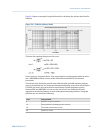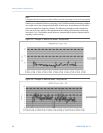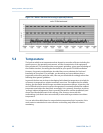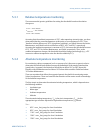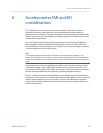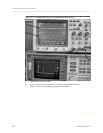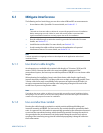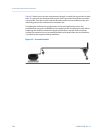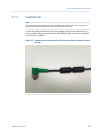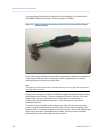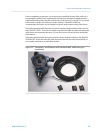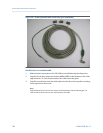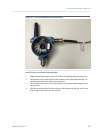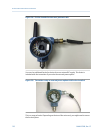
6.1 Mitigate interference
The following are four basic things you can do to reduce EMI and RFI on measurements:
• Use a shorter cable, if possible. For more details, see Section 6.1.1.
Note
The leads on the sensor cables, as delivered, are specially prepared for ease of installation.
Before attempting to cut the cables, be aware that cutting cables is associated with
significant additional rework to correctly prepare the sensor for installation.
• Run the cable through a conductive conduit, grounded at both ends. For more
details, see Section 6.1.2.
• Install ferrites on the cable. For more details, see Section 6.1.3.
• Avoid running the cable such that it matches the polarization of expected
interference sources. For more details, see Section 6.1.4.
Note
The best approach in mitigating interference also depends on the application and on local
installation codes.
6.1.1 Use shorter cable lengths
Accelerometers are available with standard cable lengths of 10 meters (30 ft) and 30
meters (100 ft) . Because the cable is the most susceptible component of the
measurement system, the best way to avoid the problem of EMI/RFI is to use shorter cable
lengths.
When planning the installation, keep in mind that shorter cable lengths significantly
improve immunity to EMI/RFI. Try to keep cable runs as short as reasonably possible. Even
3-meter cables have some susceptibility in the presence of high-intensity RF fields; it is
strongly recommended that you consider other mitigating strategies discussed in this
section even if you are using shorter cables.
Note
The leads on the sensor cables, as delivered, are specially prepared for ease of installation. Before
attempting to cut the cables, be aware that cutting cables is associated with significant additional
rework to correctly prepare the sensor for installation.
6.1.2 Use a conductive conduit
Running the cable through a conductive conduit provides additional shielding and
increases immunity to EMI/RFI. For best results, the conduit should be grounded at both
ends. As a general rule, the conduit is automatically grounded at the transmitter because it
screws into the transmitter housing, which should be grounded. Ensuring the conduit is
also grounded at the accelerometer end (and at points along the conduit run) reduces
coupling of the interfering energy into the cable and propagating it along the cable into
the accelerometer.
Accelerometer EMI and RFI considerations
MHM-97408, Rev 15 103



